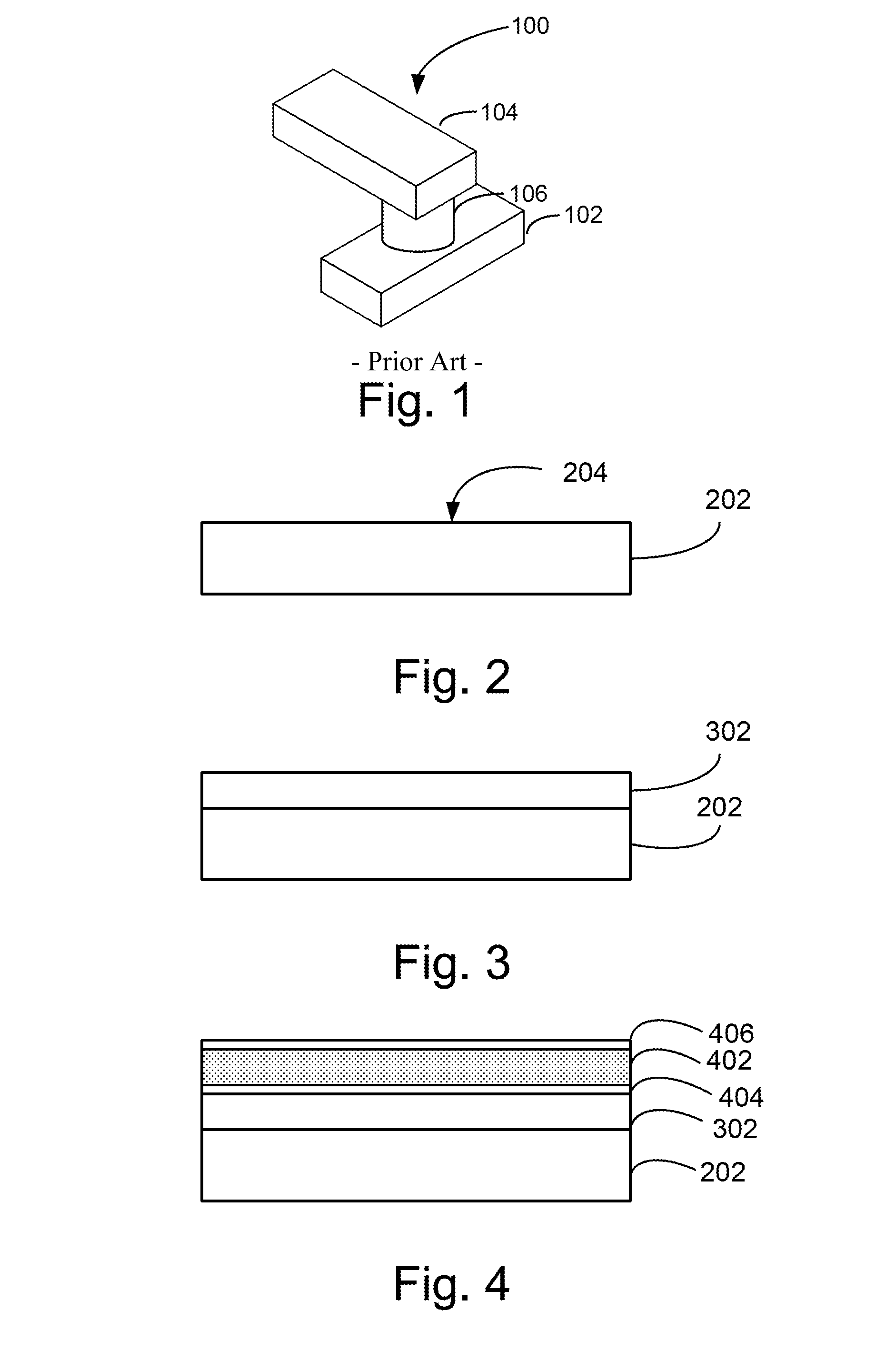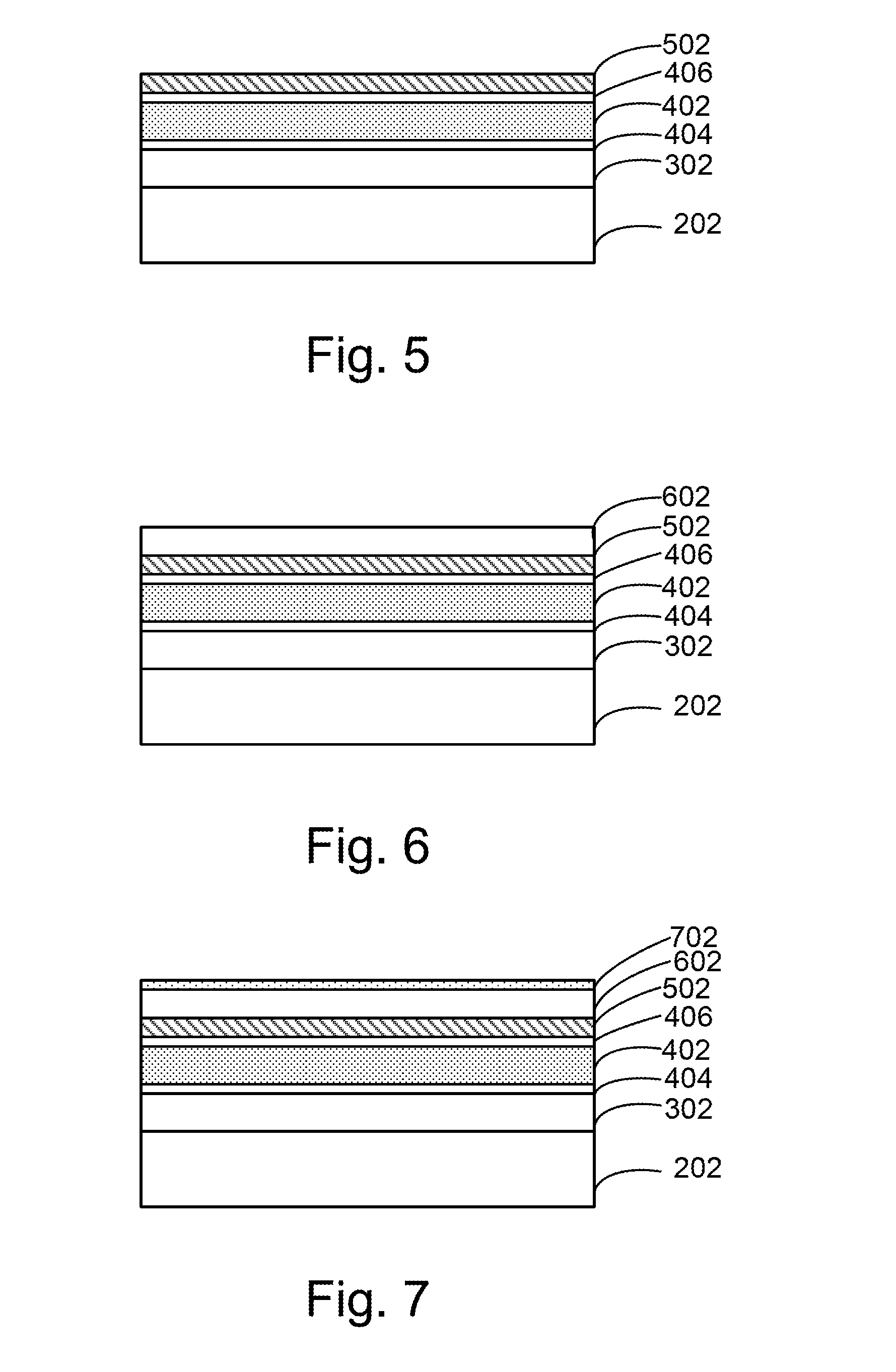Line and space architecture for a non-volatile memory device
a memory device and non-volatile technology, applied in semiconductor devices, digital storage, instruments, etc., can solve problems such as defect and yield loss, defects and yield loss, and complicate so as to improve the cmos fabrication process and improve the cmos production process. , the effect of high density memory devices
- Summary
- Abstract
- Description
- Claims
- Application Information
AI Technical Summary
Benefits of technology
Problems solved by technology
Method used
Image
Examples
Embodiment Construction
[0033]The present invention is generally related to resistive switching devices. More particularly, embodiments according to the present invention provide a method and a structure to form a resistive switching device. Embodiments according to the present invention can be applied to non-volatile memory devices but it should be recognized that the present invention can have a much broader range of applicability.
[0034]FIG. 1 is a simplified diagram of a resistive switching device 100. As shown, resistive switching device 100 includes a first electrode 102, a second electrode 104 and a resistive switching element 106 configured in an intersection region between the first electrode and the second electrode. First electrode 102 can be a metal material or a doped semiconductor material used in conventional CMOS processing. For example, the first electrode can be copper, tungsten, aluminum, or a doped semiconductor material.
[0035]Resistive switching element can be a suitable insulator mater...
PUM
 Login to View More
Login to View More Abstract
Description
Claims
Application Information
 Login to View More
Login to View More - R&D
- Intellectual Property
- Life Sciences
- Materials
- Tech Scout
- Unparalleled Data Quality
- Higher Quality Content
- 60% Fewer Hallucinations
Browse by: Latest US Patents, China's latest patents, Technical Efficacy Thesaurus, Application Domain, Technology Topic, Popular Technical Reports.
© 2025 PatSnap. All rights reserved.Legal|Privacy policy|Modern Slavery Act Transparency Statement|Sitemap|About US| Contact US: help@patsnap.com



